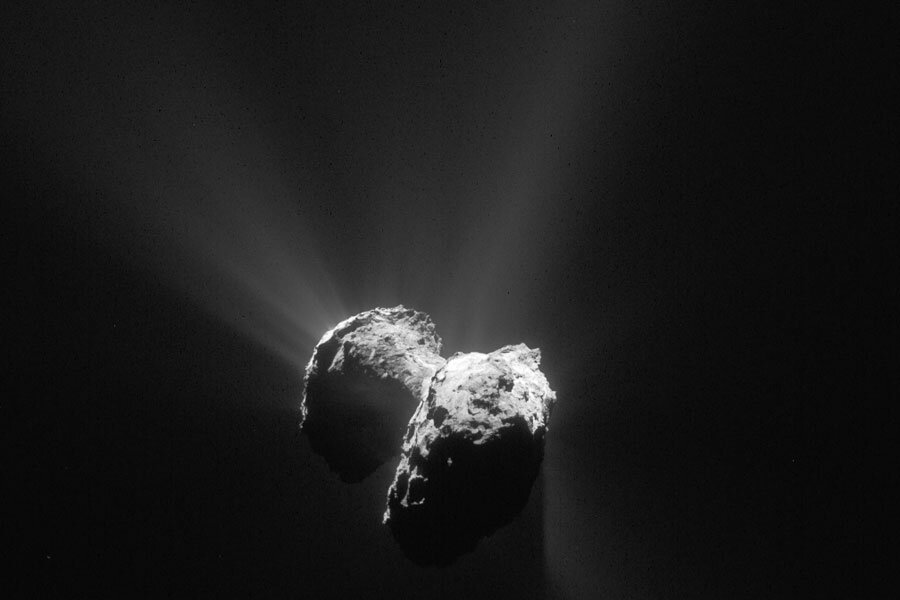Oxygen found around comet may make us rethink our entire solar system
Loading...
The European Space Agency’s Rosetta spacecraft detected molecules of oxygen surrounding the comet known as 67P/Churyumov-Gerasimenko, reports a study published Thursday in the journal Nature.
Although molecular oxygen has been detected on similarly icy moons of Saturn and Jupiter, it has “has remained undetected in cometary comas,” until now, the study authors wrote. This discovery could challenge current theories about the formation of our solar system, because it defies the conditions predicted in current solar system models.
“It is the most surprising discovery we have made so far,” Kathrin Altwegg of Switzerland's University of Bern, a Rosetta team member, told National Geographic. “The first time we saw it, I think we all went a little bit into denial because it is not expected to be found in a comet.”
The researchers were surprised to find evidence of oxygen because it usually reacts quickly with other chemicals and is rarely found in its molecular form of O2 , the breathable form that fosters life on Earth. Although oxygen is the third most abundant element in the universe, it is rare to find the element in its simplest form. “Scientists had previously assumed that almost all oxygen in a comet would come in the form of water (H2 O), carbon monoxide (CO), or carbon dioxide (CO2 ),” explains the Associated Press.
Not only was pure O2 detected in the comet’s atmosphere, but it was also the fourth most common gas.
Apparently the oxygen was trapped before the comet ever formed, and has remained unchanged since the beginning of our solar system over 4.6 billion years ago. “We had never thought that oxygen could ‘survive’ for billions of years without combining with other substances,” Professor Altwegg says in a University of Bern release.
Unlike planets, comets are icy “space-traveling time capsules,” explains National Geographic's Nadia Drake. Warmer planets are able to rearrange their initial ingredients, but comets offer a window into the past by maintaining their original, frozen debris.
Evidence of oxygen survival is exciting because it is crucial in scientists’ search for life on other planets, although the presence of oxygen doesn’t necessarily guarantee life.
“The finding is definitely a wake up call for exoplanets and the search for life,” Sara Seager, a professor of planetary science at the Massachusetts Institute of Technology told Ms. Drake. “O2 is the most prominent gas on our biosignature gas list.”
“The comet shows us there are situations we hadn’t considered, and this will happen over and over again,” said Professor Seager.
This report contains material from the Associated Press.









